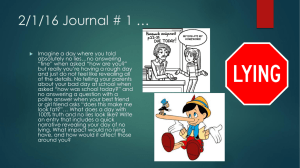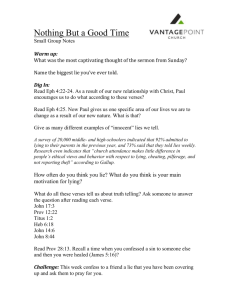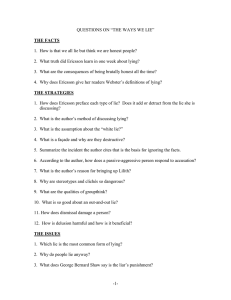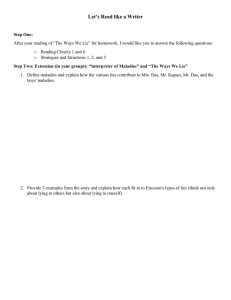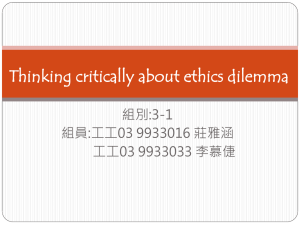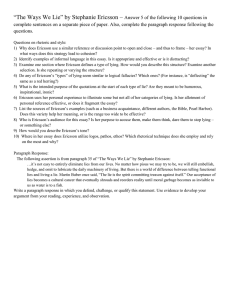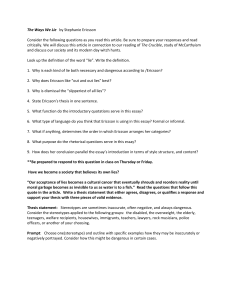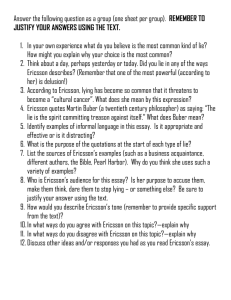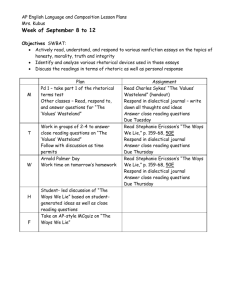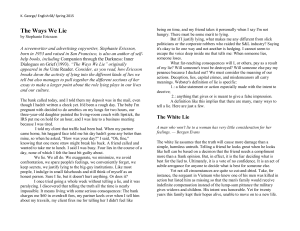Analyzing "The Ways We Lie": Rhetorical Strategies & SOAPSTone
advertisement
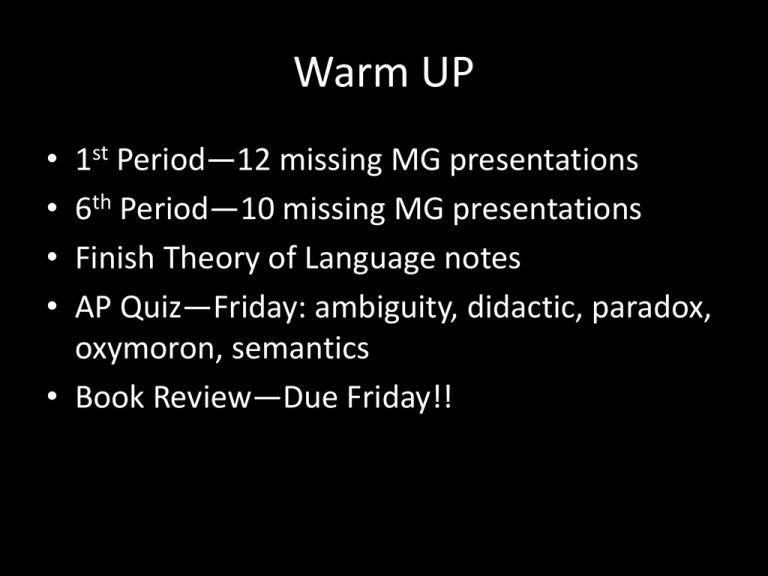
Warm UP • • • • 1st Period—12 missing MG presentations 6th Period—10 missing MG presentations Finish Theory of Language notes AP Quiz—Friday: ambiguity, didactic, paradox, oxymoron, semantics • Book Review—Due Friday!! “The Ways We Lie” Objective: To analyze a piece using a SOAPSTone and make connections to the author’s message by citing and explaining rhetorical techniques (epigraphs, diction, categorization, and anecdotes) that develop the message and author’s tone Quickwrite • What lies have you told? When is the last time you remember lying? What was the most significant lie you ever told? What circumstances have justified lying? Have you ever been ashamed of a lie or faced consequences for lying? Definition • Epigraph--A short quotation or saying at the beginning of a book or chapter, intended to suggest its theme. • Diction—author’s word choice • Anecdote—a short personal story with a message (usually humorous) • Tone—the author’s attitude towards the subject or speaker SOAPS • S—speaker – What do we know is true about Ericsson? • O—occasion – What inspired her to write this? • A—audience – What do we know about the readers? • P—purpose – What does she want people to know, realize, or believe? • S—Subject – What is her topic? While You Read • “The Ways We Lie” page 408 • After each section – Paraphrase what was said in approximately 5-10 words • How does Ericsson define this type of lie? – What was the anecdote about? • How does this connect to the type of lie? – What diction stood out? • What tone does the diction create? Does she really believe this is bad/good? – Do you agree or disagree with Ericsson Analysis • Know your prompt before you begin reading – Write an essay in which you analyze the strategies Ericsson use to develop her perspective about lies and lying.
